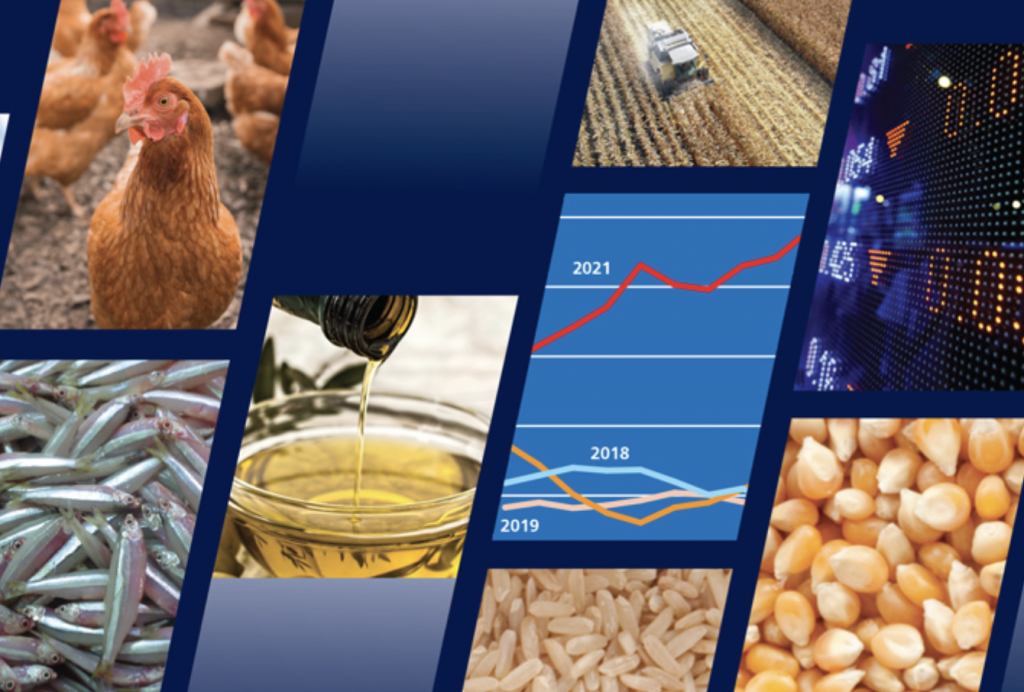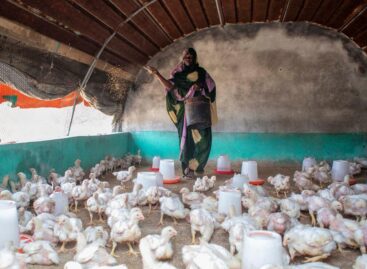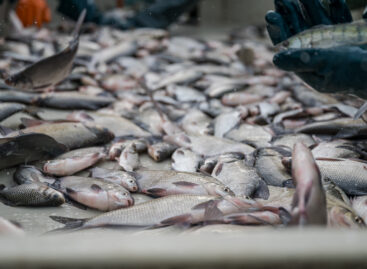World food import bill to reach a record high in 2021
Global food trade has accelerated and is poised to hit an all-time record in both volume and value terms, according to a new report released today by the Food and Agriculture Organization of the United Nations (FAO).

While global food trade has shown “remarkable resilience to disruptions throughout the COVID-19 pandemic”, rapidly rising prices of food commodities and energy pose significant challenges for poorer countries and consumers, who spend large shares of their incomes on these basic necessities, FAO says in its new Food Outlook.
FAO expects the global food import bill to reach an all-time high in 2021 and surpass US$1.75 trillion, marking a 14 percent increase from the previous year and 12 percent higher than earlier forecast in June 2021. The increase is driven by higher price levels of internationally traded food commodities and a threefold increase in freight costs.
Developing regions account for 40 percent of the total and their aggregate food import bill is expected to rise by 20 percent compared to 2020. Even faster growth is expected for Low-Income Food Deficit Countries, due to higher costs more than higher food import volumes.
Developing regions are facing sharp increases in the prices of basic staples such as cereals, animal fats, vegetable oils and oilseeds, while high-value foods, such as fruits and vegetables, fishery products and beverages are driving the bulk of the increases for developed regions.
Issued twice a year, Food Outlook offers FAO’s reviews market supply and demand trends for the world’s major foodstuffs, including cereals, vegetable oils, sugar, meat and dairy and fish. It also looks at trends in futures markets and shipping costs for food commodities.
Takeaways
World output prospects for major cereals remain robust, with record harvests expected in 2021 for maize and rice, although cereals utilization for human consumption and animal feed is forecast to grow faster.
Following a tight balance in 2020/21, preliminary forecasts for the 2021/22 season point to some improvements in the overall supply situation for oilseeds and derived products, but their respective end-season stocks could remain below average.
World sugar output in 2021/22 is forecast to rebound after three years of contraction but still fall short of global consumption. World sugar trade is foreseen to decline slightly because of reduced availabilities in key exporting countries and rising prices.
World meat production in 2021 is forecast to expand, principally triggered by a swift output rebound in China, especially pig meat. Notable demand-led output expansions are expected in all major producing regions, except Oceania. A growth slowdown in global meat trade is likely due to anticipated declines in imports by leading importing regions, especially Asia and Europe.
Global milk production in 2021 is forecast to expand, with anticipated increases in all major producing regions, led by Asia and North America. Global trade in dairy products is also forecast to expand, amid the ongoing economic recovery from COVID-19 market disruptions. However, in recent months, the import growth rate has slowed down due to rising domestic production and sluggish consumer demand.
Fisheries and aquaculture output in 2021 is forecast to grow by 2.0 percent from the 2020 level, signalling that new market dynamics resulting from the pandemic – which exacted a heavy toll on this sector – appear likely to endure in the long term. Fish trade is bouncing back despite high freight costs and logistical delays.
Financial instruments such as futures and options related to major agri-food commodities have failed “to attract the speculative fervour marked by other high-priced years”, the report observes.
Special chapter on agricultural input prices
FAO experts constructed a Global Input Price Index (GIPI) to help examine the impacts of rapidly rising input prices, especially those of energy derived from fossil fuels, on food prices, future price developments and their likely consequences for global food security.
The exercise reveals that the GIPI – comprising energy, fertilizers, pesticides, feed and seed prices – and the FAO Food Price Index (FFPI) – which tracks the internationally traded prices of major agricultural food commodities and reached a 10-year high in August 2021 – have moved in a synchronous manner since 2005, indicating that higher input costs readily translate into higher food prices.
In the year to August 2021, the FFPI rose by 34 percent and the GIPI increased overall by 25 percent, compared to the same period in 2020.
It was noted that aggregate global measures mask large regional and sector-specific differences within agriculture. Soybean producers, for example, face lower needs of currently expensive nitrogen fertilizer, so they should benefit from higher product prices. Pig producers, by contrast, face high feed costs and low meat prices, crimping margins.
The analysis offers insight into potential strains. Sub-Saharan Africa, for example, depends on imports of nitrogen – the price of which is driven by those of fossil fuels – for around 70 percent of supply.
It also points to a growing number of countries – now 53 – where households spend more than 60 percent of their income on necessities such as food, fuel, water and housing. FAO warns that rising food and fuel prices can have a highly regressive impact on poor consumers and urges particular “vigilance” in this regard.
Related news
FAO: International food prices have been declining since September
🎧 Hallgasd a cikket: Lejátszás Szünet Folytatás Leállítás Nyelv: Auto…
Read more >FAO-Ministry of Agriculture Scholarship Program Continues
🎧 Hallgasd a cikket: Lejátszás Szünet Folytatás Leállítás Nyelv: Auto…
Read more >FAO: 2026 is the International Year of Rangelands and Pastoralists
🎧 Hallgasd a cikket: Lejátszás Szünet Folytatás Leállítás Nyelv: Auto…
Read more >Related news
CDs and DVDs are experiencing a renaissance at Vatera, but second-hand LEGO is the real star of this Christmas
🎧 Hallgasd a cikket: Lejátszás Szünet Folytatás Leállítás Nyelv: Auto…
Read more >NGM and VOSZ cooperation agreement for the security of digital commerce
🎧 Hallgasd a cikket: Lejátszás Szünet Folytatás Leállítás Nyelv: Auto…
Read more >Despite the damage caused by the drought, there will be no shortage of high-quality Hungarian fish
🎧 Hallgasd a cikket: Lejátszás Szünet Folytatás Leállítás Nyelv: Auto…
Read more >






